Traveling with only a carry-on can revolutionize your travel experience. It’s more than just packing light; it’s about embracing freedom and efficiency. TRAVELS.EDU.VN is here to show you how to ditch the checked baggage fees, avoid the baggage carousel chaos, and travel the world with ease. Discover expert packing strategies and essential tips to master the art of traveling light and experience the joy of simplified travel.
1. Choosing The Right Light Luggage
The cornerstone of successful carry-on-only travel is selecting the perfect luggage. A lightweight companion provides the flexibility and freedom every traveler craves. Choosing the right piece of luggage can feel like finding the holy grail of travel gear. It’s about balancing size, weight, design, and mobility to create a seamless travel experience.
1.1. Types Of Carry-On Luggage
Each luggage type has unique benefits, making some more suitable than others, depending on your destination and activities. Consider the pros and cons to determine the perfect fit for your travel style.
- Suitcases: Ideal for longer trips when packing ultralight isn’t feasible, providing ample space for all essentials. However, they can be cumbersome on stairs or cobblestone streets and encourage overpacking.
- Duffel Bags: Compressible and often accepted even when slightly overstuffed. However, like suitcases, they’re not ideal for extended carrying.
- Travel Backpacks: The preferred choice for trips involving a lot of movement, offering hands-free convenience. As long as they meet size restrictions, backpacks are excellent carry-on options.
1.2. Size Matters: Understanding Carry-On Dimensions
What size bag is best for carry-on? There is no single, fixed carry-on size. The standard is roughly 56 x 36 x 23 cm (22 x 14 x 9 inches), based on Federal Aviation Administration regulations. This fits comfortably in most overhead bins. However, size limits differ by airline. Always verify size restrictions with your airline before your trip. Overlooking this step can result in unexpected fees and baggage hassles.
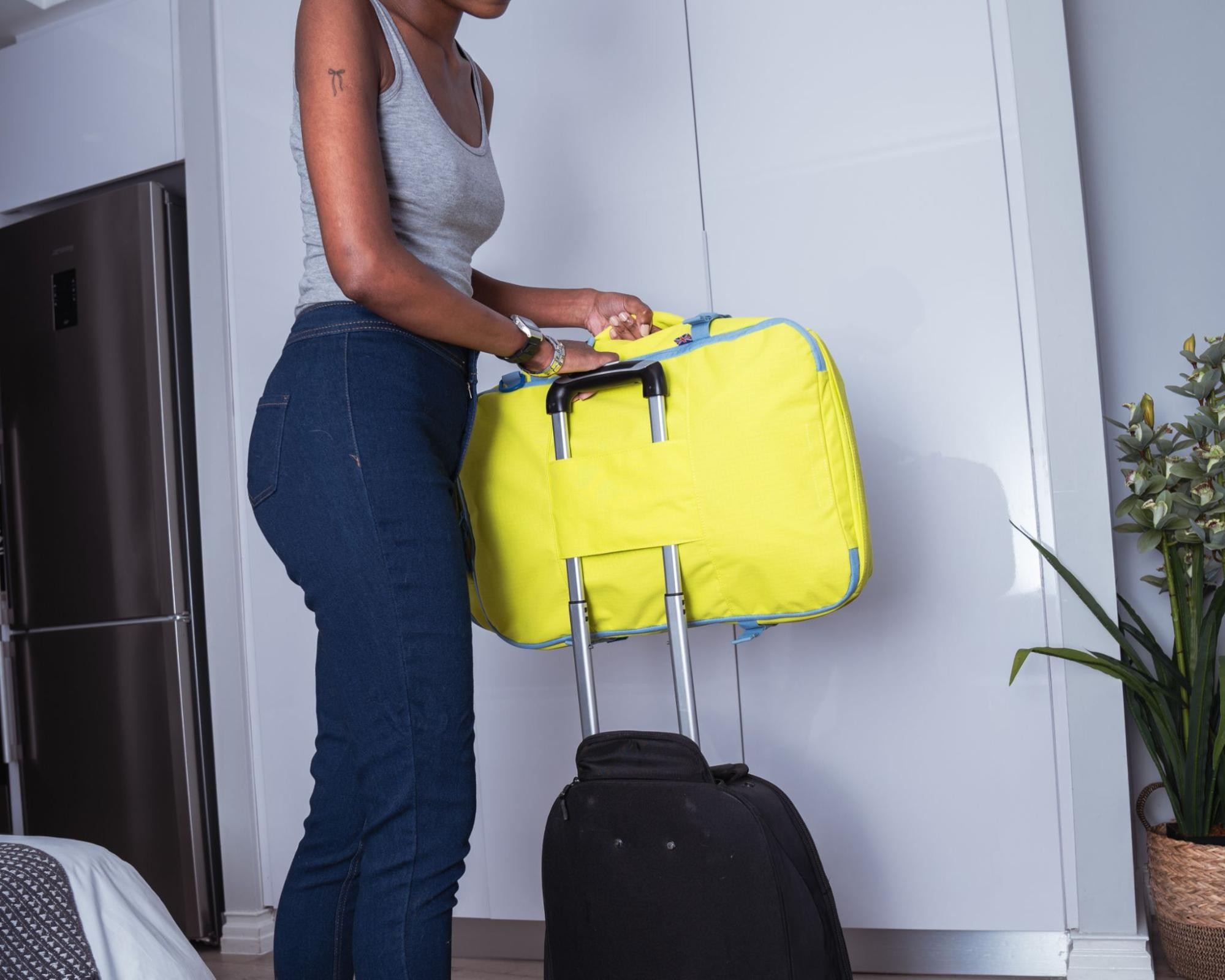 Travel Backpacks
Travel Backpacks
Ensure your carry-on size aligns with airline regulations to avoid any complications.
1.3. Prioritizing Weight: Staying Under The Limit
Weight is just as crucial as size, impacting your overall luggage allowance. Is there a universal size limit for carry-on weight? No, carry-on weight limits vary widely among airlines. For example, British Airways allows up to 23 kg (51 pounds), while Singapore Airlines and Qantas have stricter limits of 7 kg (15 pounds).
Although weight limits aren’t always strictly enforced, understanding your airline’s policy is essential. Choosing a lightweight carry-on bag is always beneficial.
1.4. Design and Organization: Maximizing Space
While design might seem secondary, the right features can simplify packing. You will always be better off having a backpack or suitcase with extra organizational features. Look for features like:
- Shoe Separators: Keeps shoes separate from clean clothes.
- Laptop Sleeves: Provides padded protection for electronic devices.
- Zippered Pockets: Secures small items.
- Compression Straps: Compresses contents to save space.
At a minimum, opt for bags with multiple pockets for easy access to essentials.
1.5. Mobility: Ease Of Movement
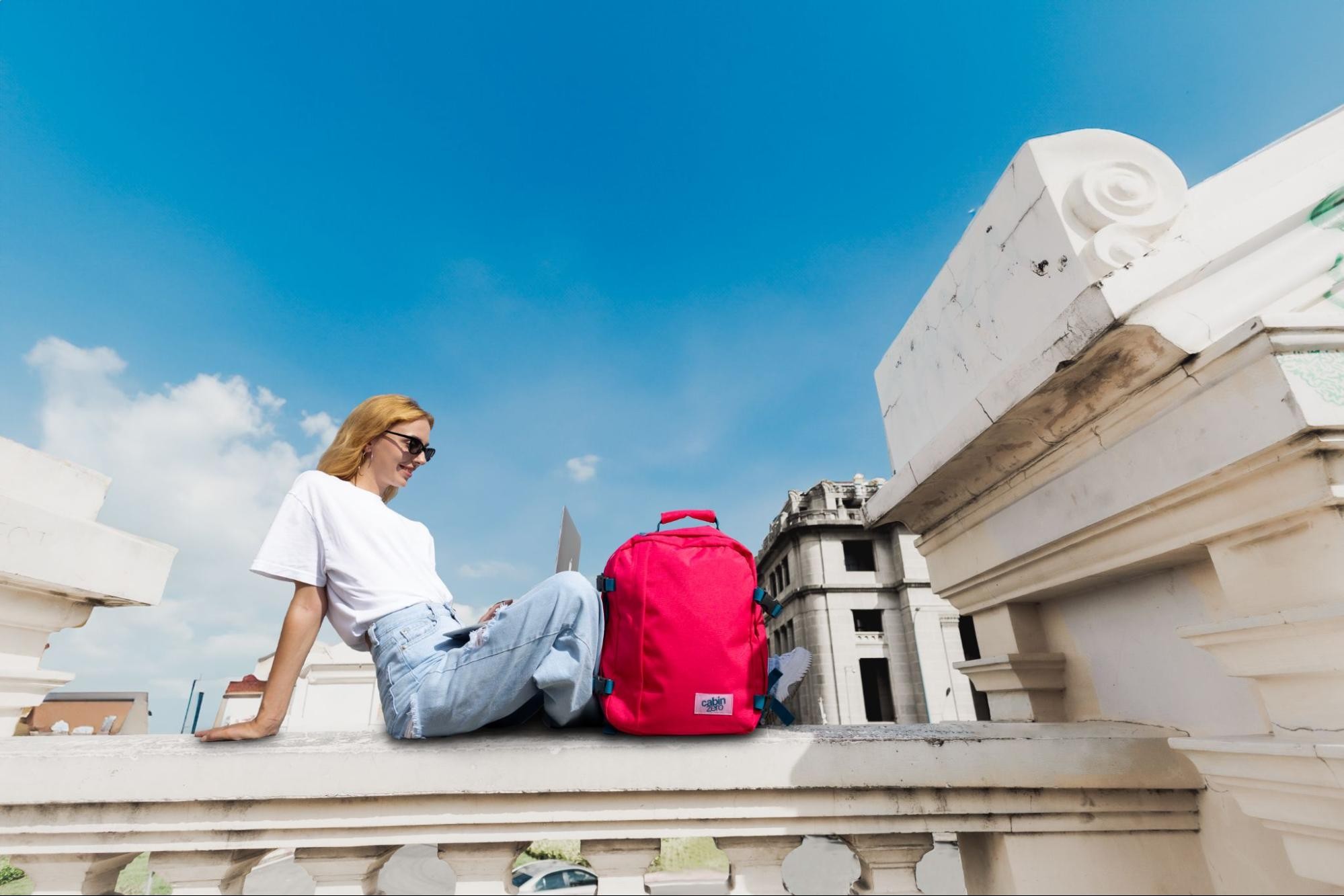 Mobility of traveling with a backpack
Mobility of traveling with a backpack
Backpacks offer superior mobility and flexibility, making them ideal for travelers on the move.
Mobility is paramount, especially when navigating busy airports. A carry-on bag becomes heavy when filled with travel essentials. Sturdy wheels and easy-to-use handles are essential.
However, nothing beats a backpack for flexibility. A backpack of fewer than 50 liters usually qualifies as a carry-on for most airlines. For travel in Europe or island-hopping in Thailand, a reliable backpack is indispensable. CabinZero’s collection offers a wide range of functional and stylish backpacks.
2. 15 Carry-On Only Travel Hacks For A Smooth Flight
What to do if you only have a carry-on? Here are 15 hacks for traveling with just a carry-on:
2.1. Rolling Clothes vs. Folding Clothes
Rolling is superior to folding when conserving space in a carry-on. Why is rolling more effective for carry-on travel? Rolling clothes maximizes space and minimizes wrinkles. It allows you to stack items vertically, providing easy access without rummaging.
2.2. Utilizing Packing Cubes
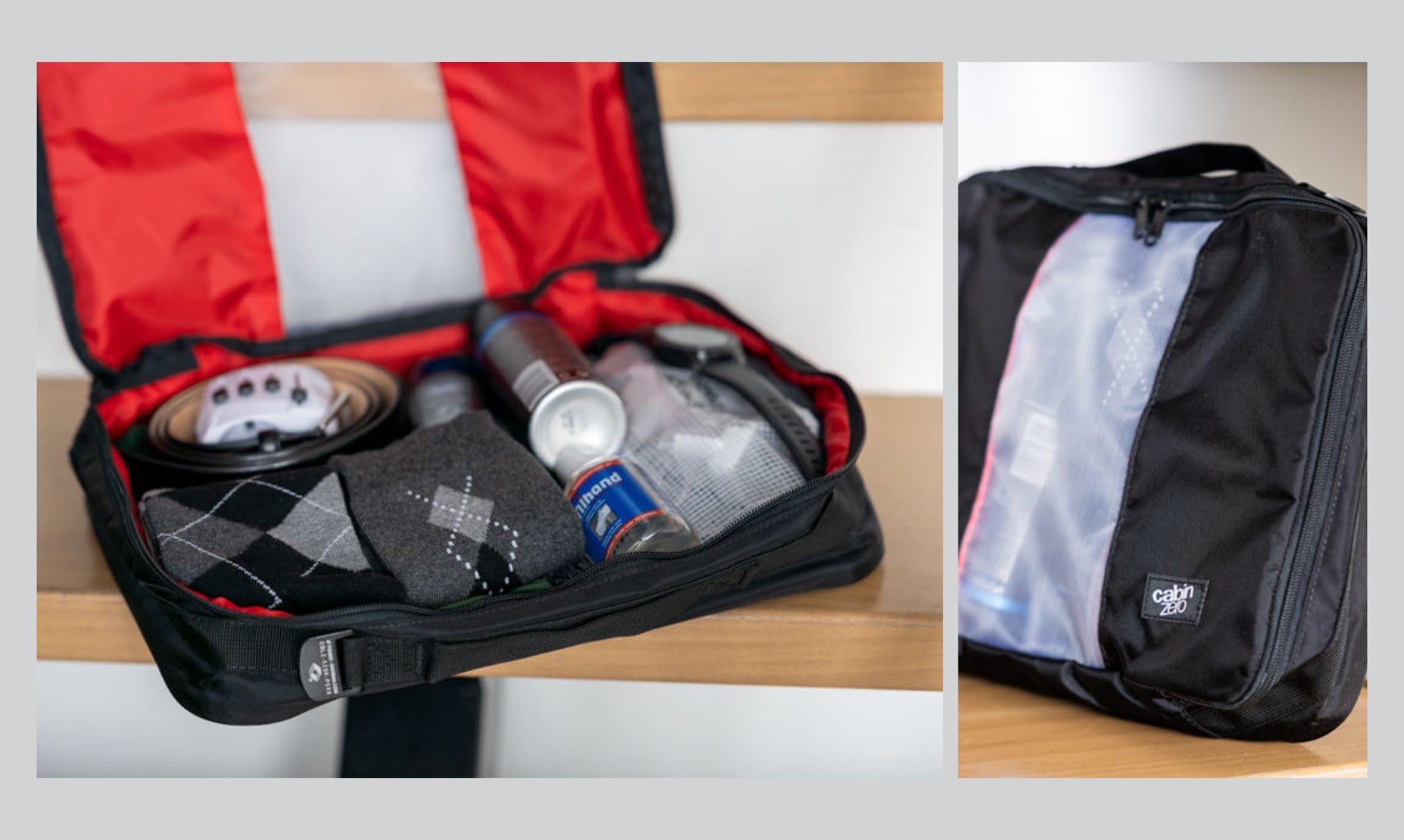 Packing Cubes
Packing Cubes
Packing cubes are essential for staying organized and maximizing space in your carry-on luggage.
Packing cubes are essential for organized travel. How do packing cubes help save space? They compress clothes and keep luggage organized. Additional cubes can separate dirty clothes and prevent odors. For even more space savings, consider compression or vacuum-sealed bags for bulky items.
2.3. Sharing Toiletries and Electronics
Sharing toiletries and electronics can create more space for all travelers. How much space can be saved by combining essentials? Sharing can significantly reduce the number of items each person packs. By sharing, you can also avoid extra baggage fees.
2.4. Making Use Of A Personal Item
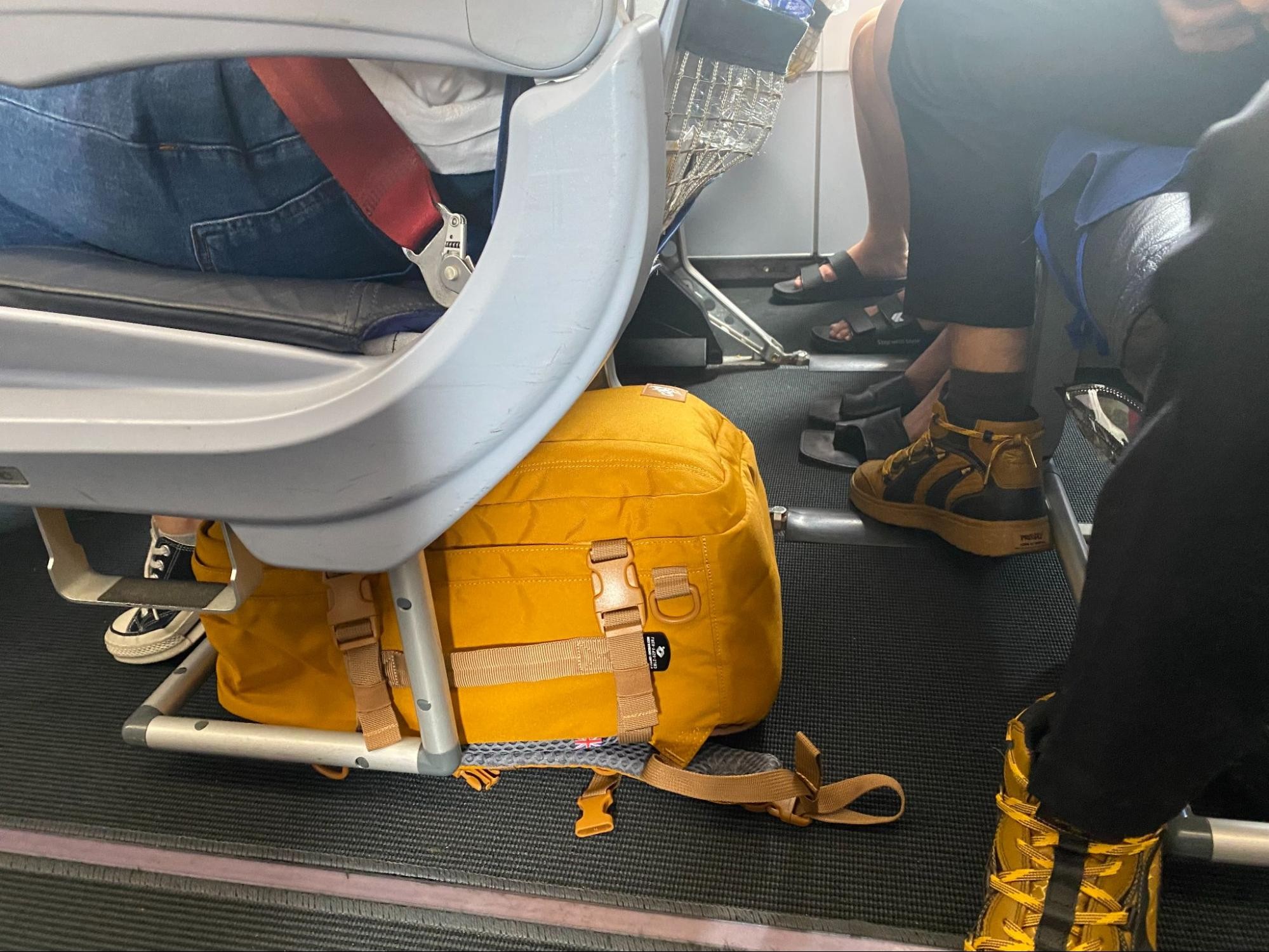 Underseat Baggage Allowance
Underseat Baggage Allowance
Utilize the underseat baggage allowance with a personal item to maximize your carry-on capacity.
Taking advantage of a personal item, in addition to your carry-on, provides extra space. Many airlines permit one personal item. What can a personal item be used for? It can hold toiletries, a jacket, or an extra pair of shoes. It can also double as a day bag for excursions.
2.5. Building A Travel Capsule Wardrobe
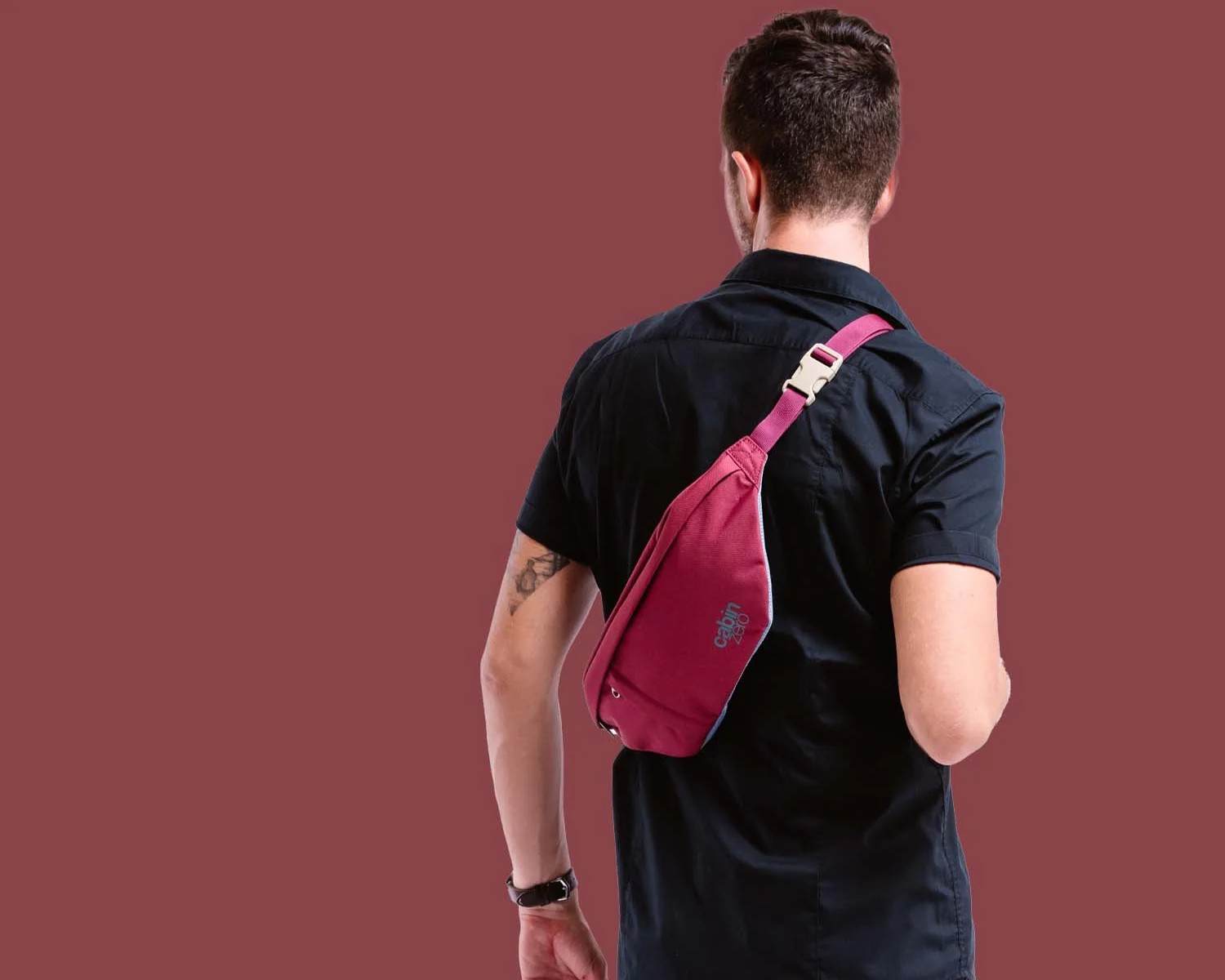 Travel Capsule Wardrobe
Travel Capsule Wardrobe
A capsule wardrobe of versatile pieces allows you to create multiple outfits with minimal clothing.
Creating a capsule wardrobe maximizes outfit options with minimal items. How do neutral clothes contribute to a capsule wardrobe? Neutral colors can be easily mixed and matched. Prioritize versatile clothing that can serve multiple purposes. Don’t hesitate to repeat outfits.
2.6. Lightweight And Breathable Fabrics
Choosing the right fabric can make a significant difference. How does lightweight material impact luggage capacity? Lightweight fabrics allow for more clothing items to be packed. They also provide versatility in various climates. Lightweight sweaters worn over T-shirts work well in different environments.
2.7. Minimizing Toiletries
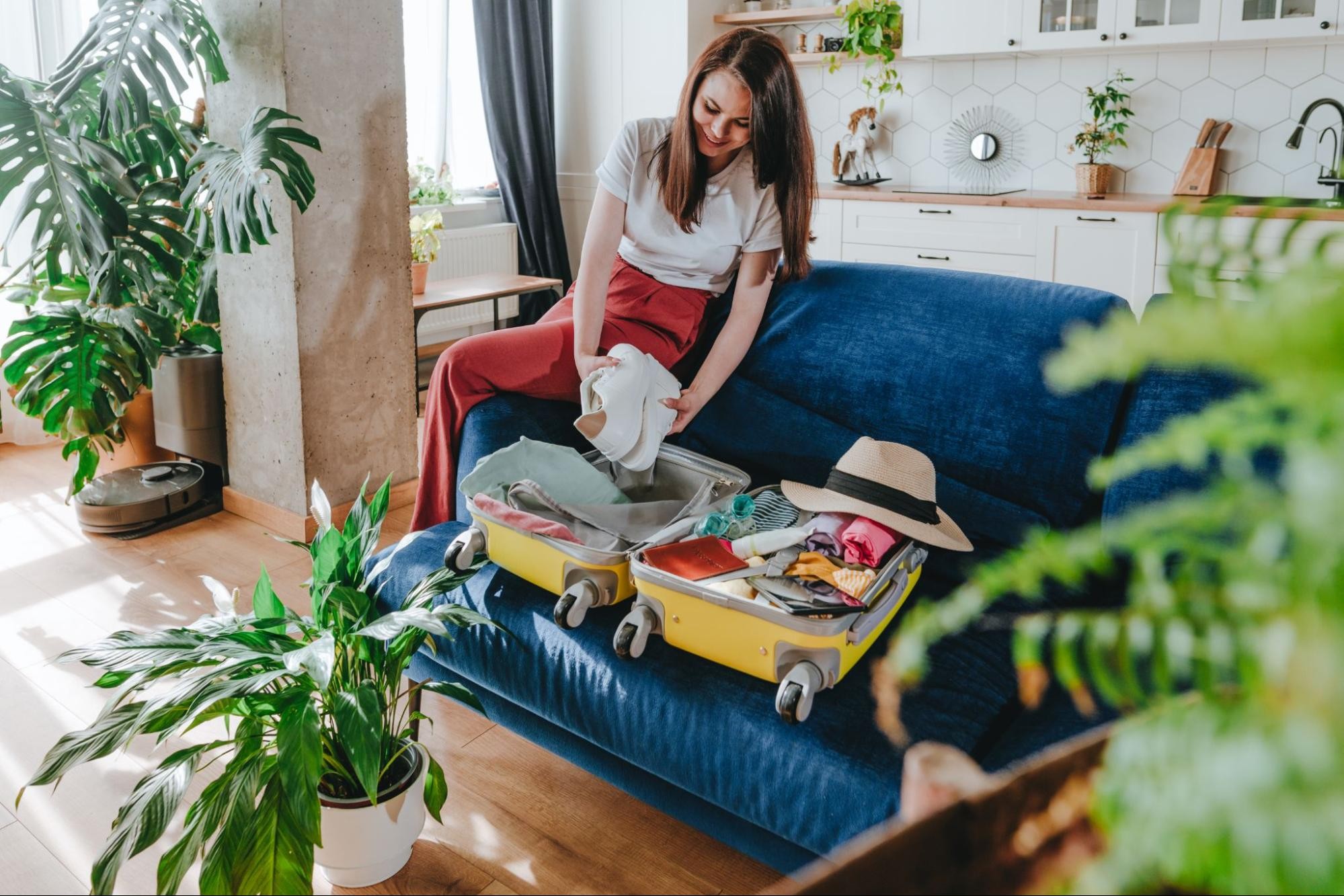 Solid Travel Toiletries
Solid Travel Toiletries
Solid travel toiletries can expedite security checks and eliminate the risk of spills.
Comply with TSA’s 3-1-1 rule when packing liquids. How can issues with TSA’s liquid policies be avoided? Switch to solid toiletries. Solid shampoos and perfumes are TSA-friendly and spill-proof. Consider buying toiletries at your destination, but bring essential items that may be hard to find.
2.8. Planning To Do Laundry
Doing laundry during your trip can reduce the number of clothes needed. How often should you do laundry when traveling with only a carry-on? Plan to do laundry about once a week. Check if your accommodation has laundry facilities or is near laundromats. Hand-washing items in a sink is also an option.
2.9. Differentiating Between Needs And Wants
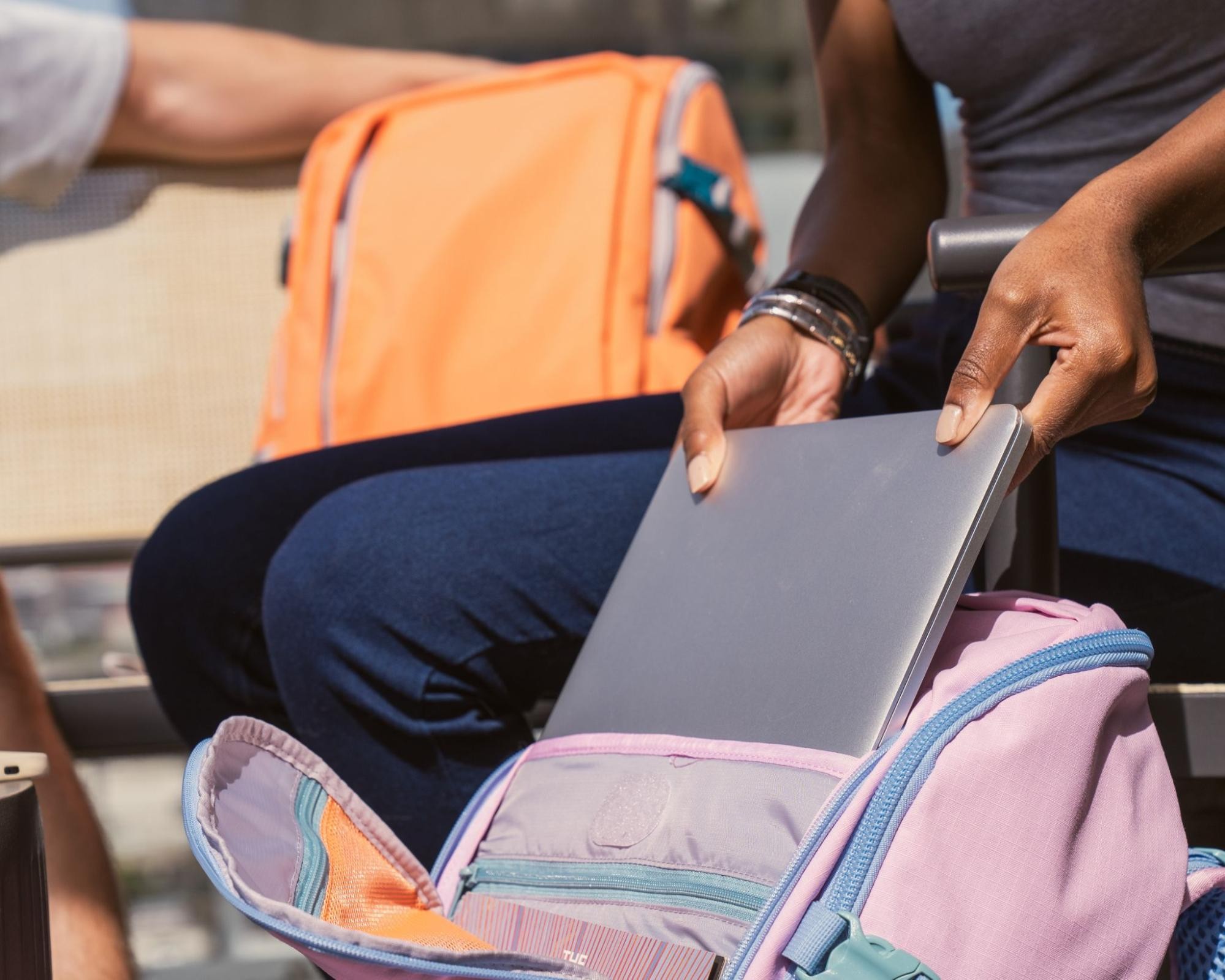 To Pack or Not to Pack
To Pack or Not to Pack
Evaluating each item’s necessity will help you reduce your packing list.
Distinguishing between essential and non-essential items is key. How can you decide if an item is necessary? Consider whether you will use the item enough to justify its space. Reduce your initial packing list by at least 30-50%. Essential travel items include:
- First aid kit
- Travel insurance
- Quick-dry clothes
- Layers
- Chargers and adapters
- Comfortable walking shoes
- Extra socks and underwear
2.10. Wearing Heavier Items
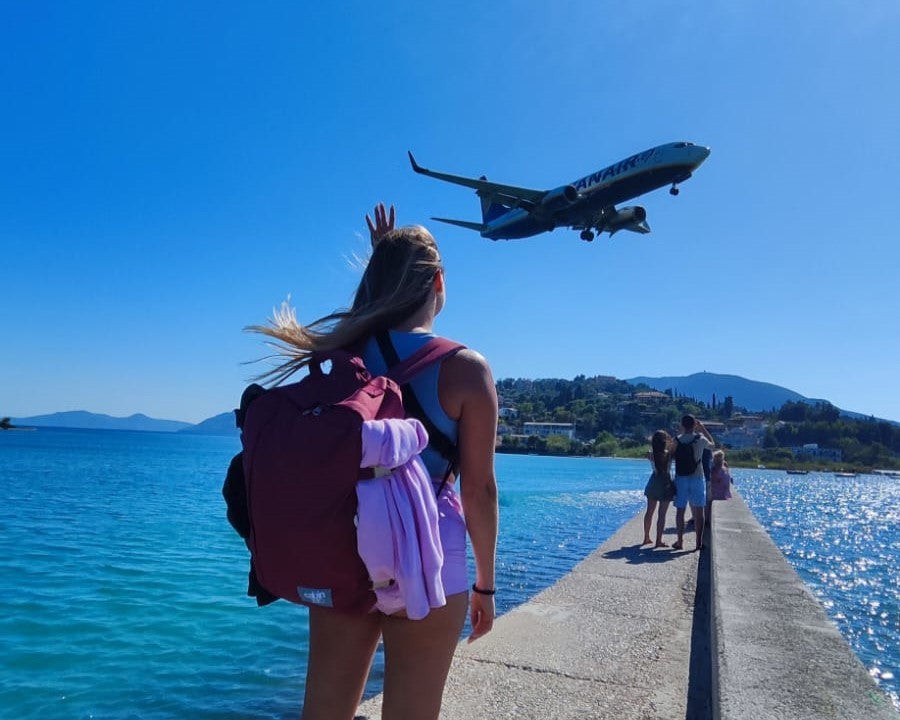 Storing a Jacket
Storing a Jacket
Wearing or carrying bulky items like jackets and boots frees up valuable space in your carry-on.
Wearing bulky items on the plane saves valuable luggage space. Should heavier items be packed or worn? Wear heavy items like jackets and boots. Sweaters can be carried separately or attached to your backpack using bungee cords.
2.11. Choosing Footwear Wisely
Limiting your footwear to a few versatile pairs maximizes space and minimizes weight.
Selecting the right footwear is crucial for carry-on travel. How many pairs of shoes are sufficient for a two-week trip? Limit yourself to a maximum of three pairs. Running shoes, casual shoes, and sports sandals are versatile options. Footwear should be placed at the bottom of the luggage for stability.
2.12. Maximizing Space
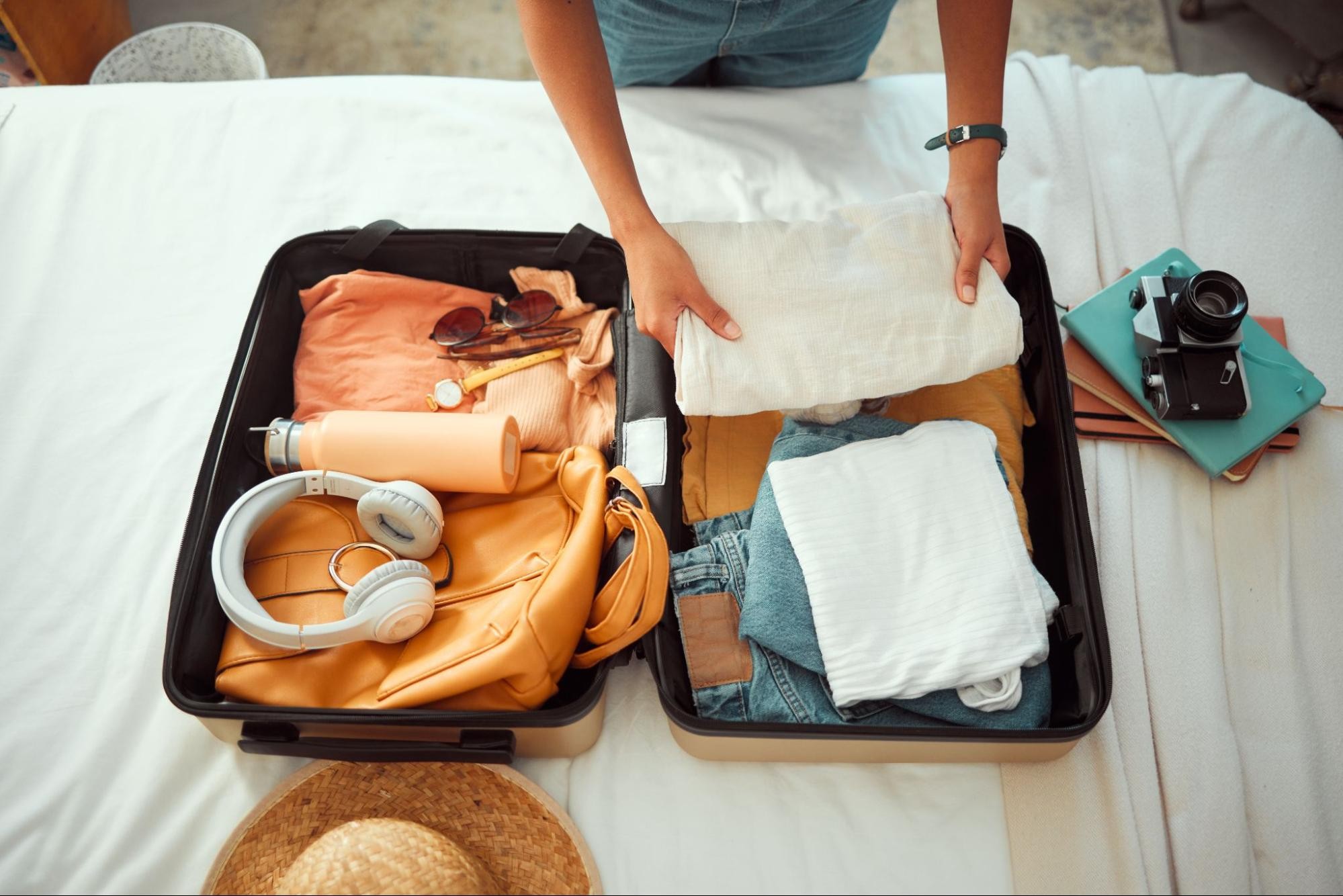 Packing items in order of use
Packing items in order of use
Packing items strategically ensures you make the most of every inch of space in your carry-on.
Strategic packing utilizes every corner of your suitcase. What is the best way to arrange items in a suitcase? Start with the heaviest items at the bottom. Fill shoes with socks and small items. Lighter items should fill in the gaps. Keep frequently needed items easily accessible.
2.13. Knowing The Rules
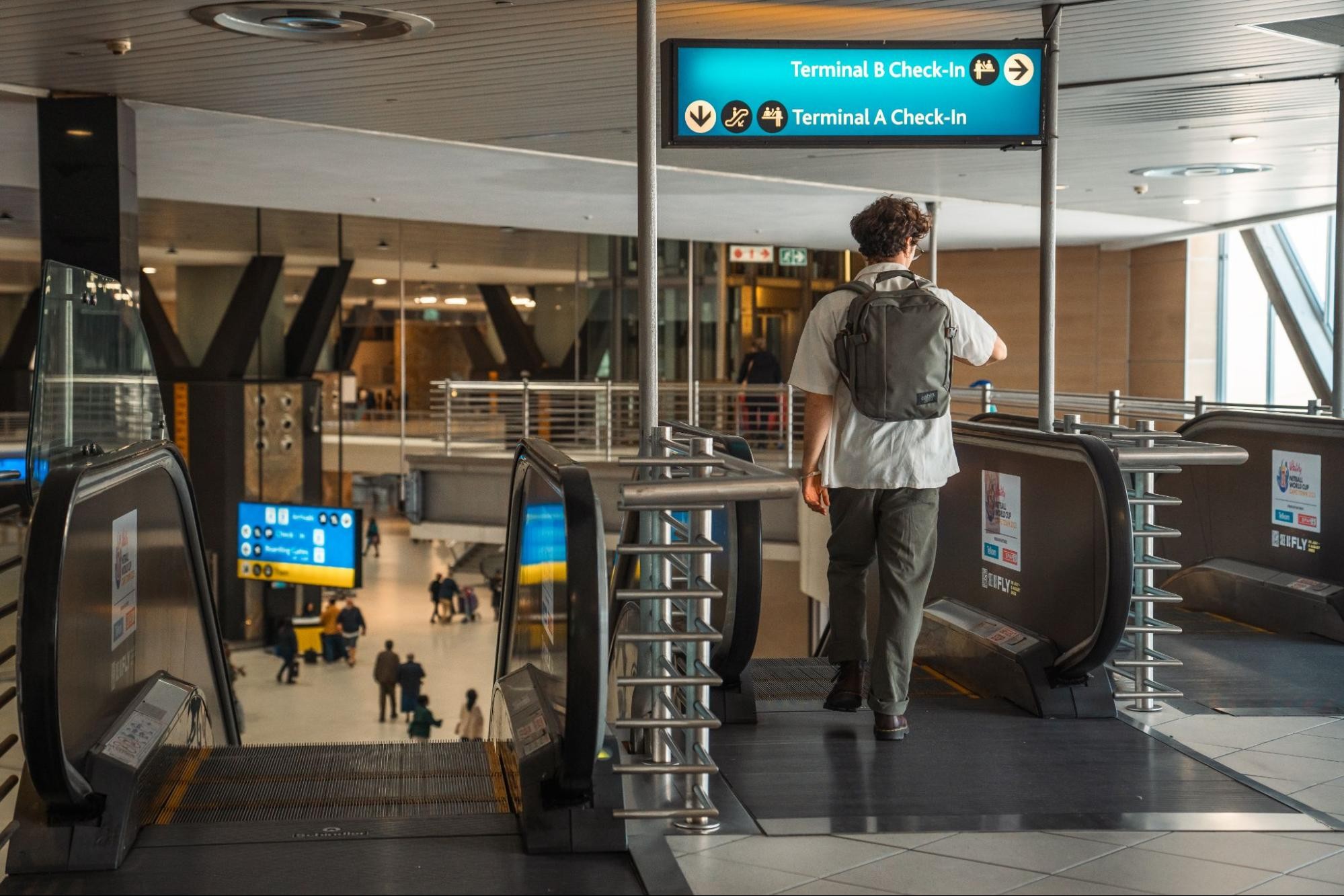 Carry-on-Friendly Backpack
Carry-on-Friendly Backpack
Familiarizing yourself with airline regulations ensures a smooth boarding process.
Familiarize yourself with airline-specific carry-on rules. What is the standard size limit for carry-ons? The most common size limit is 22” x 14” x 9” (56 cm x 36 cm x 23 cm). Avoid packing restricted items such as:
- Liquids over 100ml / 3.4 oz
- Sharp objects
- Flammable materials
- Lithium batteries exceeding 100Wh or 160Wh
Pack a few days early to test the weight and comfort of your bag.
2.14. Gadgets Are Bulky, So Reconsider What You Need
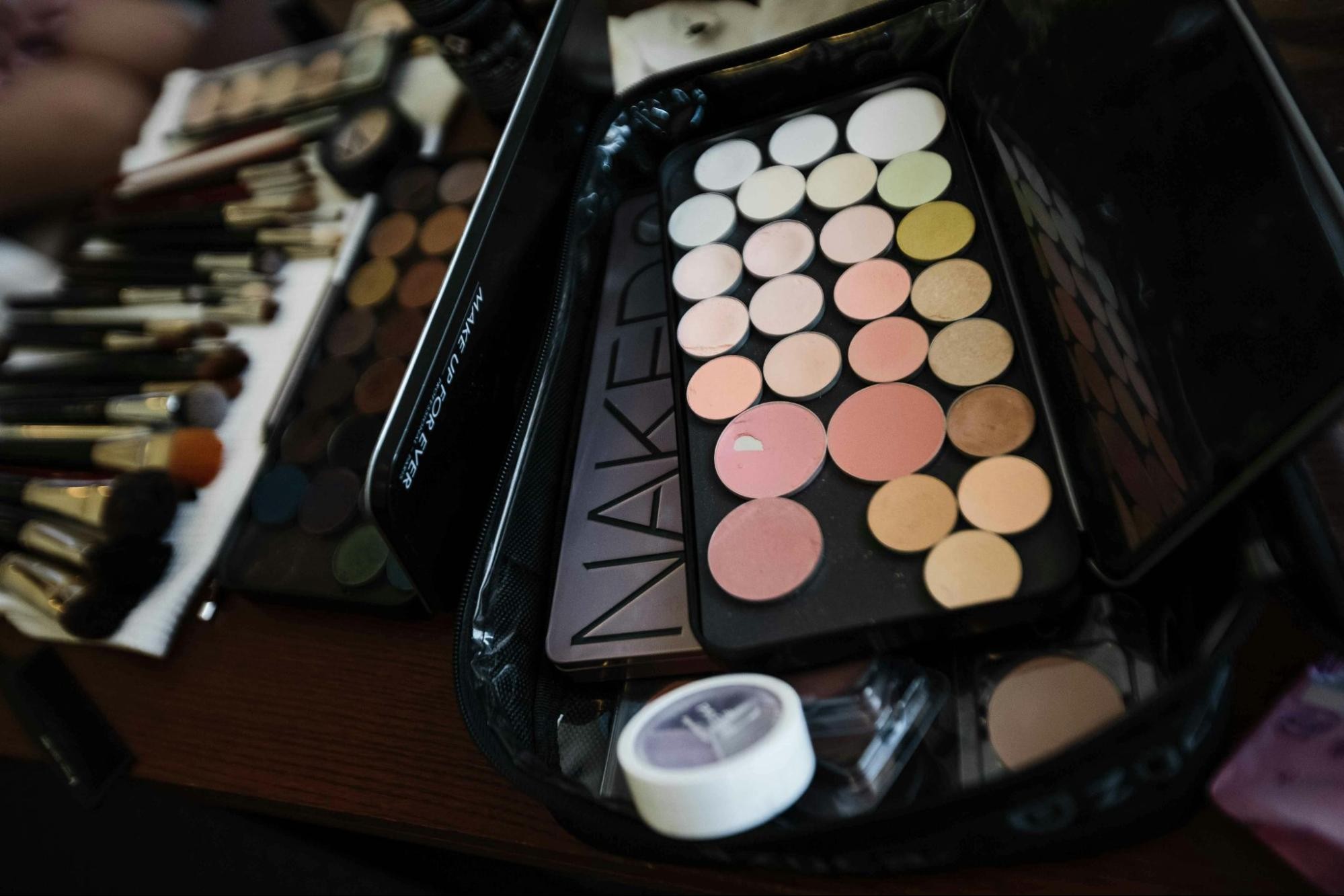 Eye-Shadow Palette in a Makeup Bag
Eye-Shadow Palette in a Makeup Bag
Prioritizing essential cosmetics saves significant space and weight in your luggage.
Evaluate the necessity of each gadget. What electronic devices can be left behind? Unless required for business, leave laptops, backup drives, and DSLR cameras at home. Smartphones often suffice for light travel.
2.15. Be Selective When Packing Your Cosmetics
Just as with shoes, you don’t want to bring the entire makeup collection with you. For most getaways, bring enough beauty products for one night and one day look, and that’ll suffice. Like with other travelling essentials, we love cosmetic products that can do more than just one task. Why bring five separate shadows when you can get by with one small palette? Does your collection have a multitasking product that serves as lipstick and blush in one? If not, you can get a bit more creative!
2.16. Pack Smart To Get Through Security
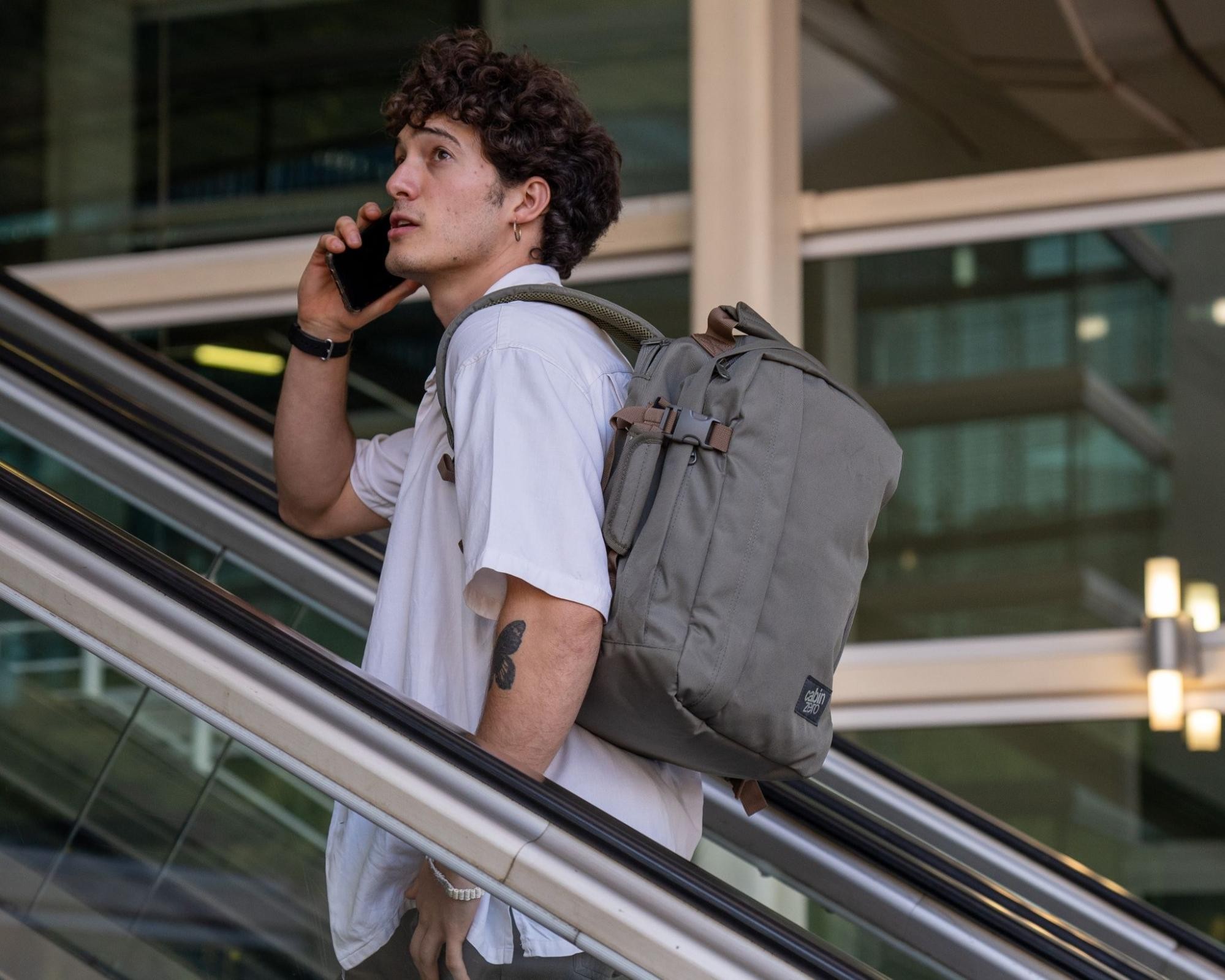 Mindful Packing
Mindful Packing
Organizing your carry-on for quick access to essential items streamlines the security process.
Streamline the security process by packing strategically. What items should be easily accessible for security checks? Keep liquid bags and electronics in an easy-to-reach compartment for quick removal during X-ray scanning.
3. Visiting Napa Valley With Only A Carry-On
If you’re dreaming of experiencing the exquisite vineyards and culinary delights of Napa Valley, you might wonder if it’s possible to do so while traveling with only a carry-on. The answer is a resounding yes! With a little planning and the right packing strategies, you can savor everything Napa has to offer without being weighed down by bulky luggage.
3.1. Key Considerations for Napa Valley Packing
-
Weather: Napa Valley enjoys a Mediterranean climate with warm summers and mild winters. Pack versatile clothing that can be layered to adapt to changing temperatures.
-
Activities: Wine tasting, vineyard tours, fine dining, and outdoor activities are common. Pack clothing and shoes suitable for both casual and more upscale settings.
-
Events: Napa Valley hosts numerous events throughout the year, including wine festivals and concerts. Check the event calendar and pack accordingly if you plan to attend any special occasions.
3.2. Maximizing Your Wardrobe for Napa Valley
- Versatile Clothing: Pack neutral-colored items that can be easily mixed and matched. A few key pieces like a blazer, a comfortable pair of jeans, and a versatile dress can create multiple outfits.
- Comfortable Shoes: You’ll likely be doing a lot of walking, so comfortable shoes are a must. Consider a pair of stylish sneakers or comfortable walking shoes that can be dressed up or down.
- Layers: Evenings can be cool, so pack a light jacket, sweater, or scarf.
- Accessories: Add a touch of elegance with a few well-chosen accessories like a stylish hat, sunglasses, and a statement necklace.
3.3. Essential Items for Wine Tasting
- Wine Stain Remover: Accidents happen, so pack a small stain remover pen or wipes.
- Reusable Water Bottle: Stay hydrated while enjoying wine tastings.
- Small Notebook and Pen: Jot down your favorite wines and tasting notes.
3.4. Booking Your Napa Valley Experience with TRAVELS.EDU.VN
Simplify your Napa Valley adventure by booking with TRAVELS.EDU.VN. We offer curated tour packages that cater to your unique preferences, ensuring a seamless and memorable experience.
-
Expert Planning: Our team handles all the details, from selecting the best vineyards to arranging transportation and accommodations.
-
Exclusive Access: Gain access to exclusive wine tastings and behind-the-scenes tours not available to the general public.
-
Personalized Service: We tailor each itinerary to your specific interests and budget, ensuring a personalized experience.
3.5. Contact TRAVELS.EDU.VN for Your Napa Valley Getaway
Ready to experience the best of Napa Valley without the hassle of planning? Contact TRAVELS.EDU.VN today to book your unforgettable tour.
-
Address: 123 Main St, Napa, CA 94559, United States
-
WhatsApp: +1 (707) 257-5400
-
Website: travels.edu.vn
Let us help you create a Napa Valley itinerary that fits perfectly in your carry-on and leaves you with memories to last a lifetime.
4. FAQs
4.1. Do I Have To Go Through Customs If I Only Have A Carry-On?
Yes, you must go through customs regardless of luggage. Why is customs necessary for all travelers? Customs officials need to inspect all luggage for illegal goods.
4.2. Does A Purse Count As A Carry-On?
No, a purse is usually considered a personal item. What is the size limit for a personal item? The most universal limit is 18 x 14 x 8 inches (46 x 36 x 20 cm).
4.3. What If My Carry-On Is 1 Inch Too Big?
The airline staff decides how to handle oversized luggage. What might happen if your carry-on is slightly oversized? You may be asked to check it in the cargo hold or pay a fee. The final decision rests with the airline staff.
4.4. Does A Pillow Count As A Personal Item?
No, the travel neck pillow worn around your neck won’t be counted as a personal item. A full-size pillow, on the other hand, can be considered a personal item. Airlines including American Airlines, United Airlines, Delta, and Frontier all classify a pillow as a personal item.
4.5. Can I Bring A Backpack, A Carry-on And A Purse?
Generally, passengers can bring two items: a carry-on and a personal item. What items qualify as a personal item? A backpack, purse, briefcase, or laptop bag can be considered a personal item. If you wish to bring an extra purse, fit your small purse into the backpack, so they are just one item. Remember that this “combined” item shouldn’t exceed the personal item size or weight limit.
4.6. Do You Have To Check In For A Flight If You Only Have A Carry-On?
Yes, you must check in even with only a carry-on. How can time be saved during check-in? Check in online and print your boarding pass at home.
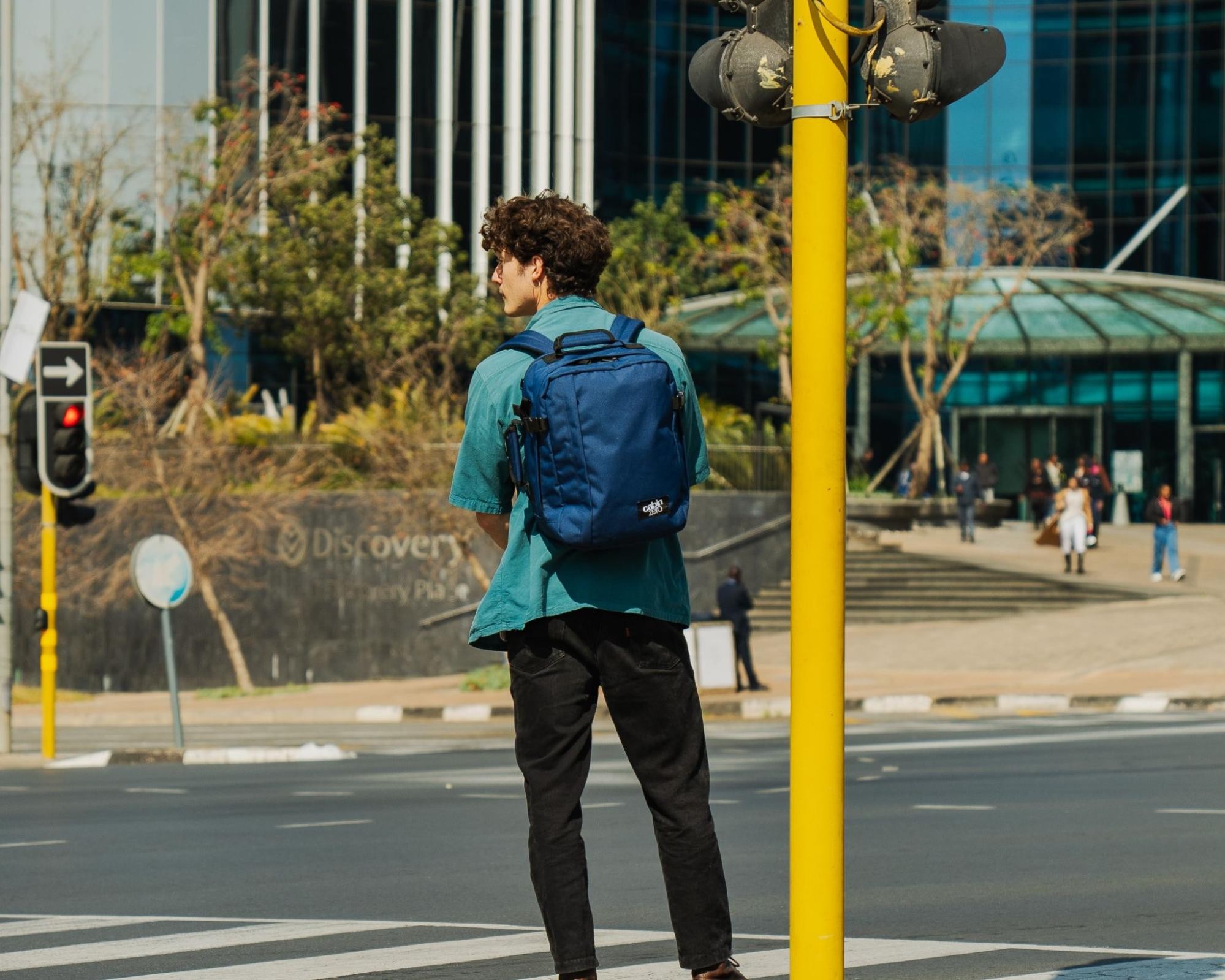 Travelling carry-on only
Travelling carry-on only
Enjoy the simplicity and freedom of traveling with only a carry-on.
5. Less Is More: A Golden Rule of Travel
Traveling with only a carry-on is an achievable skill. Is it possible to travel with just a carry-on? Yes, traveling with one carry-on is an acquired skill, and we hope our tips and tricks above can help you along the road. Carry-on travel provides convenience and peace of mind. Shed unnecessary items and focus on the joy of discovery. With the right strategies, you can enhance your travel experiences and embark on your journeys with lighter luggage.

